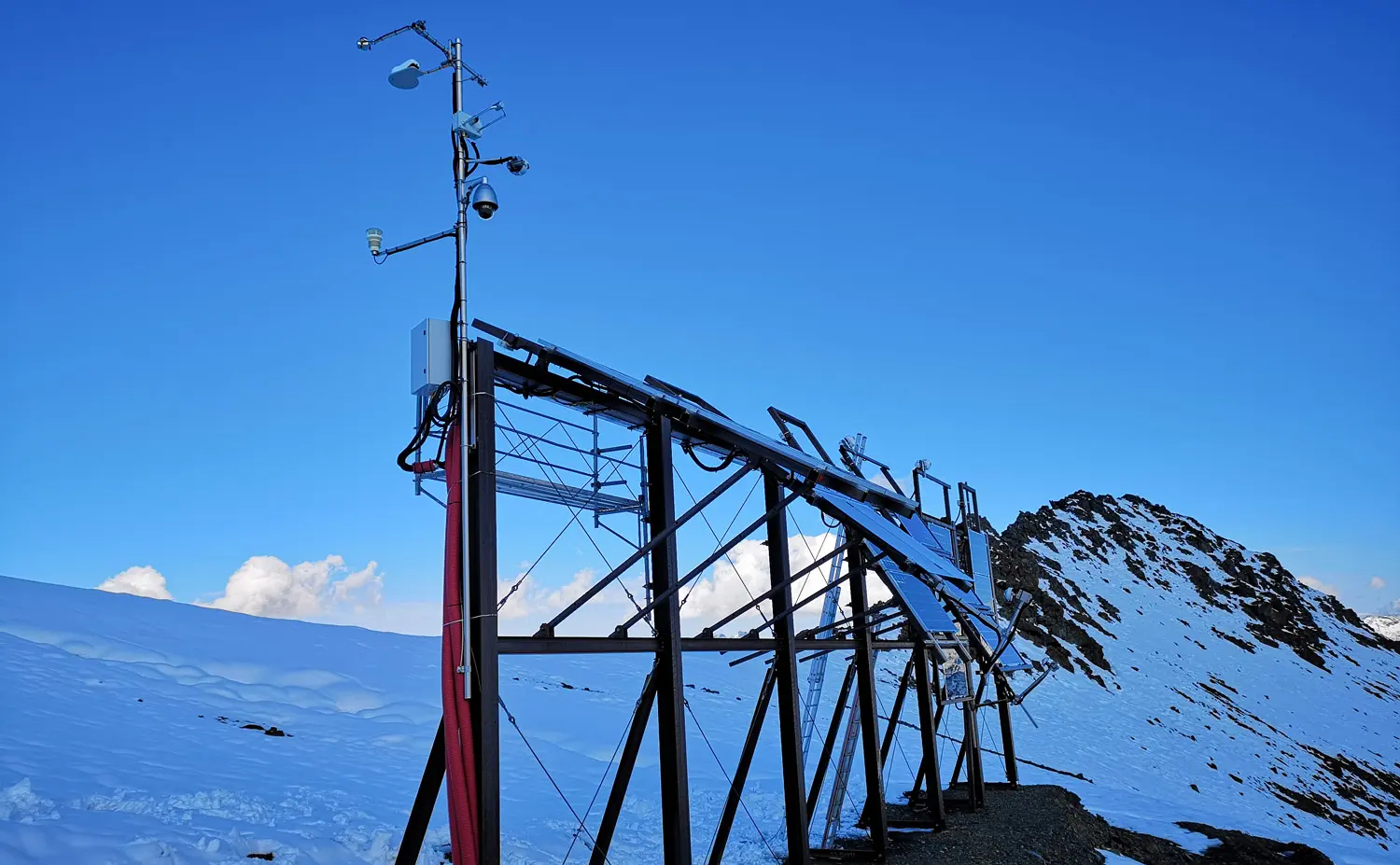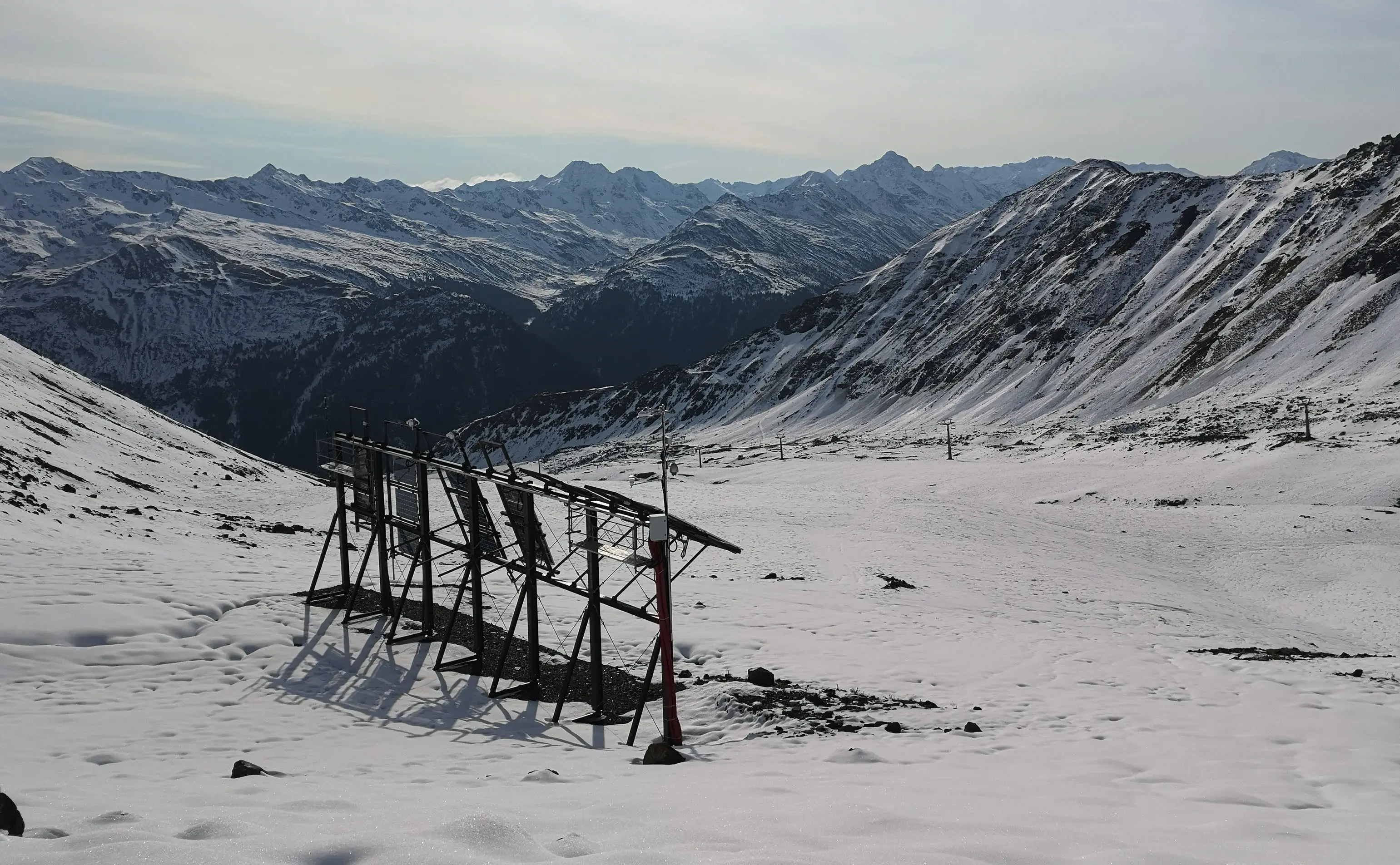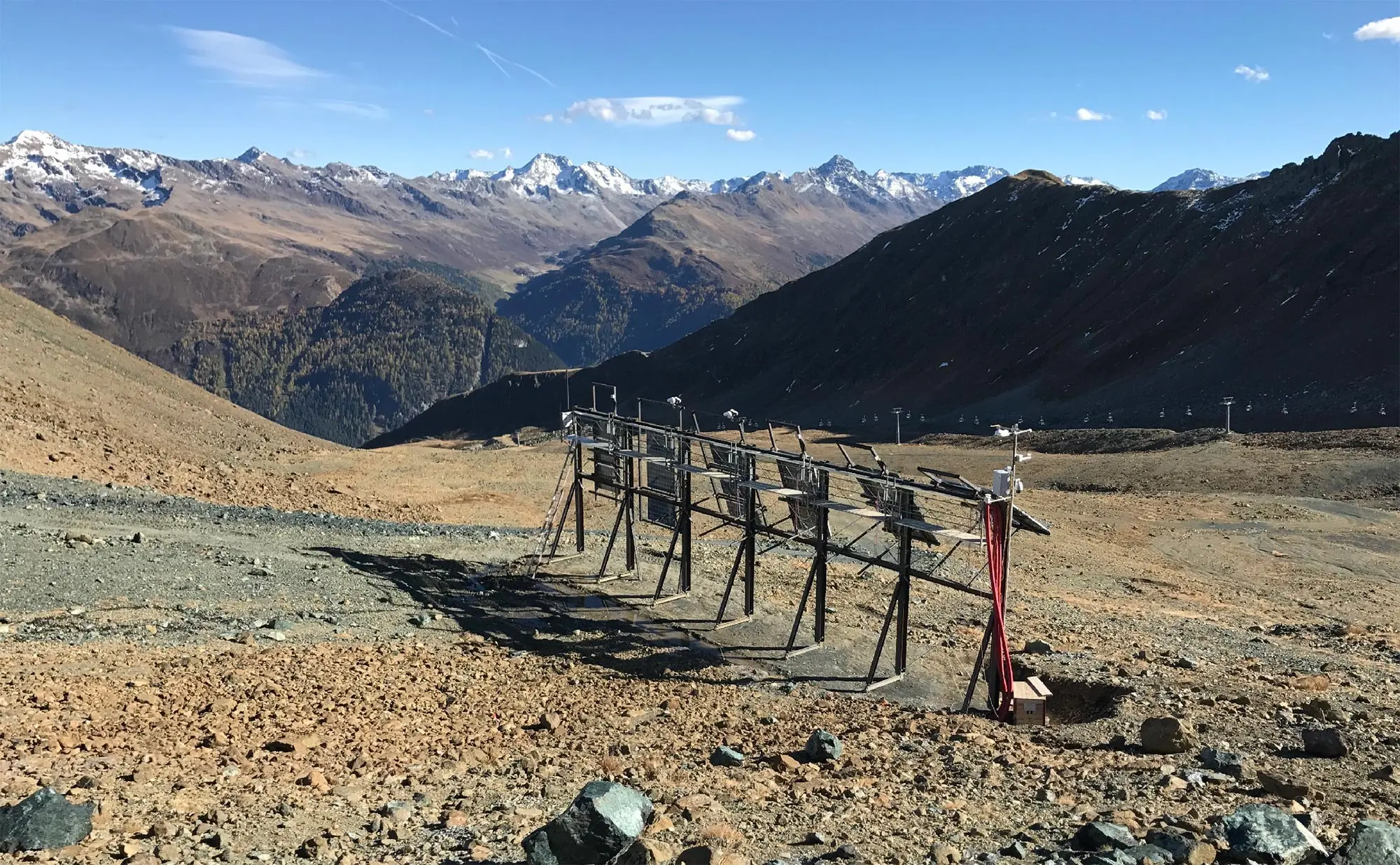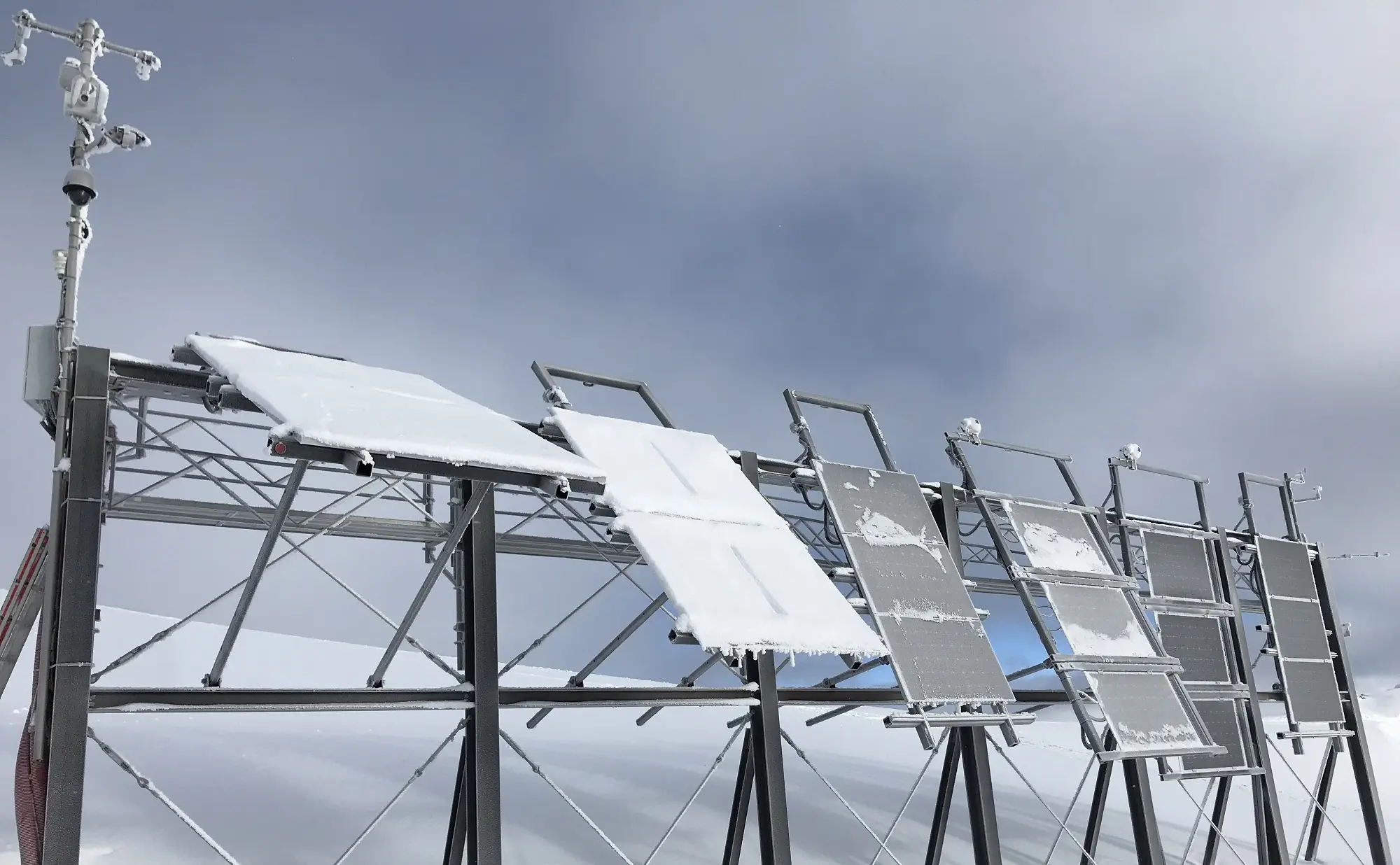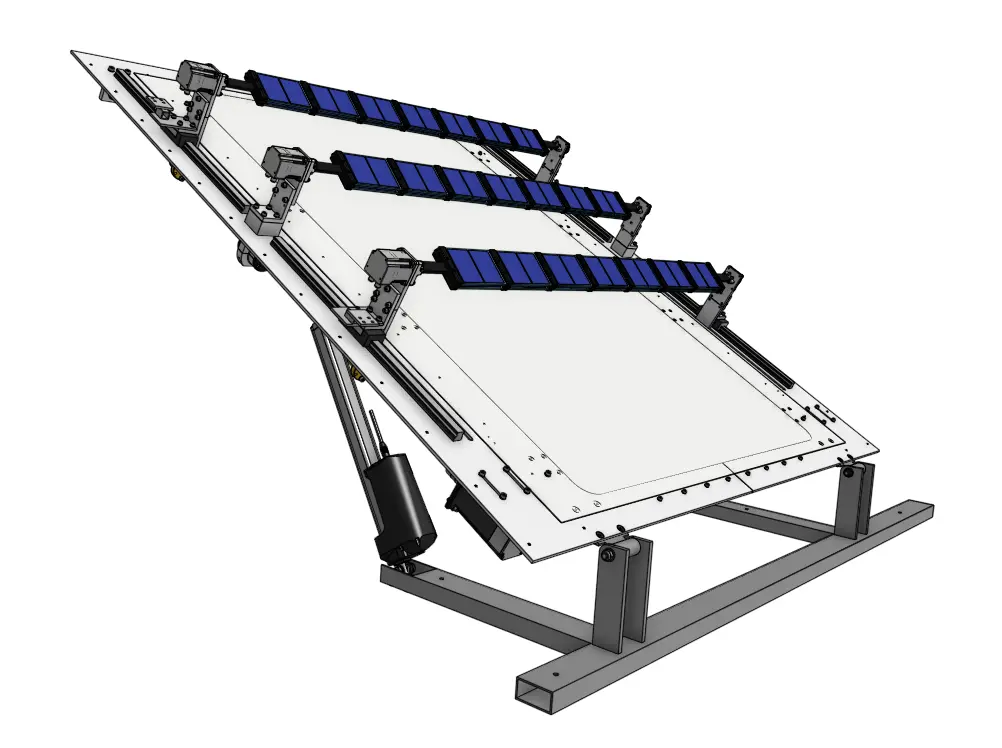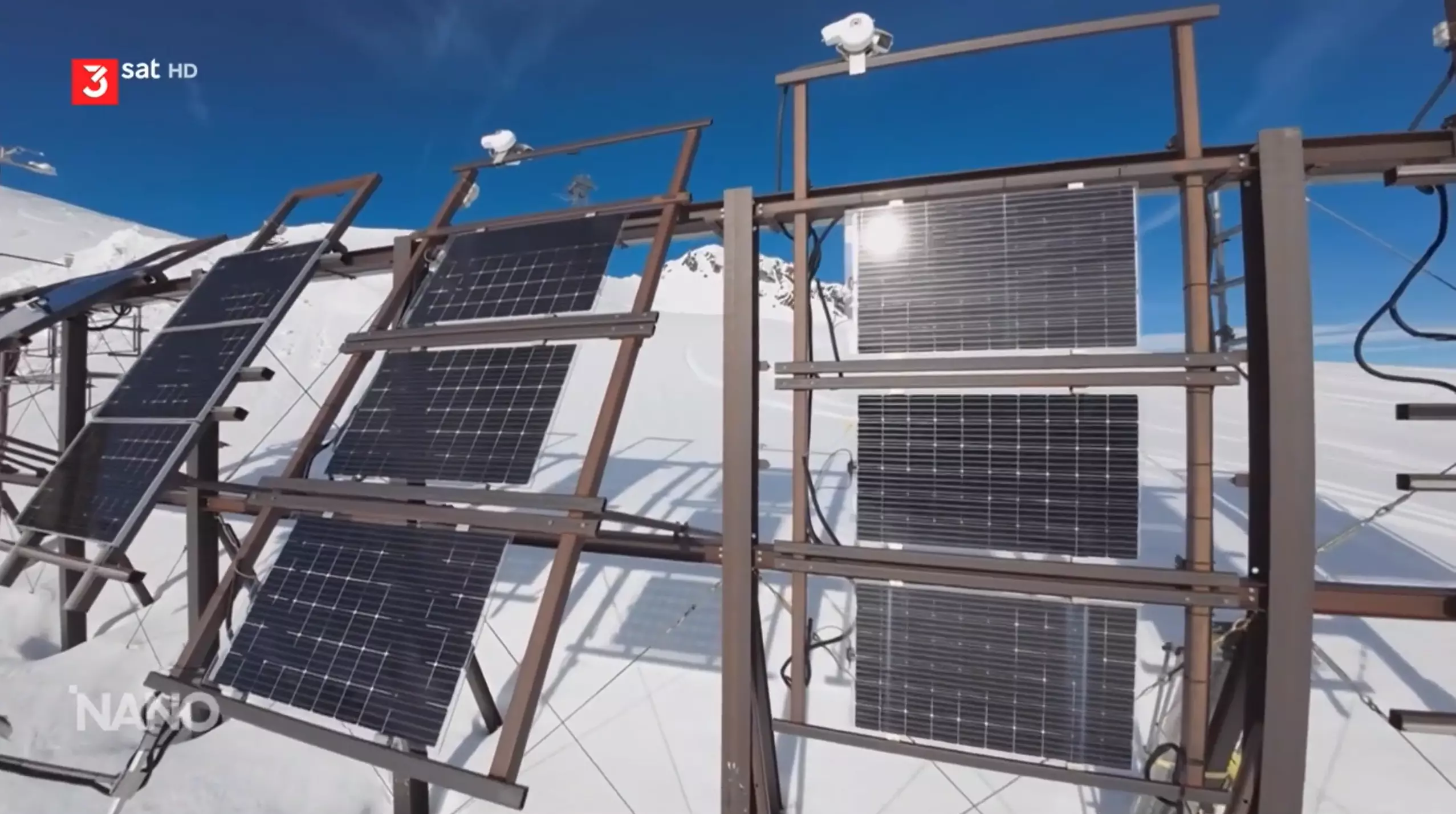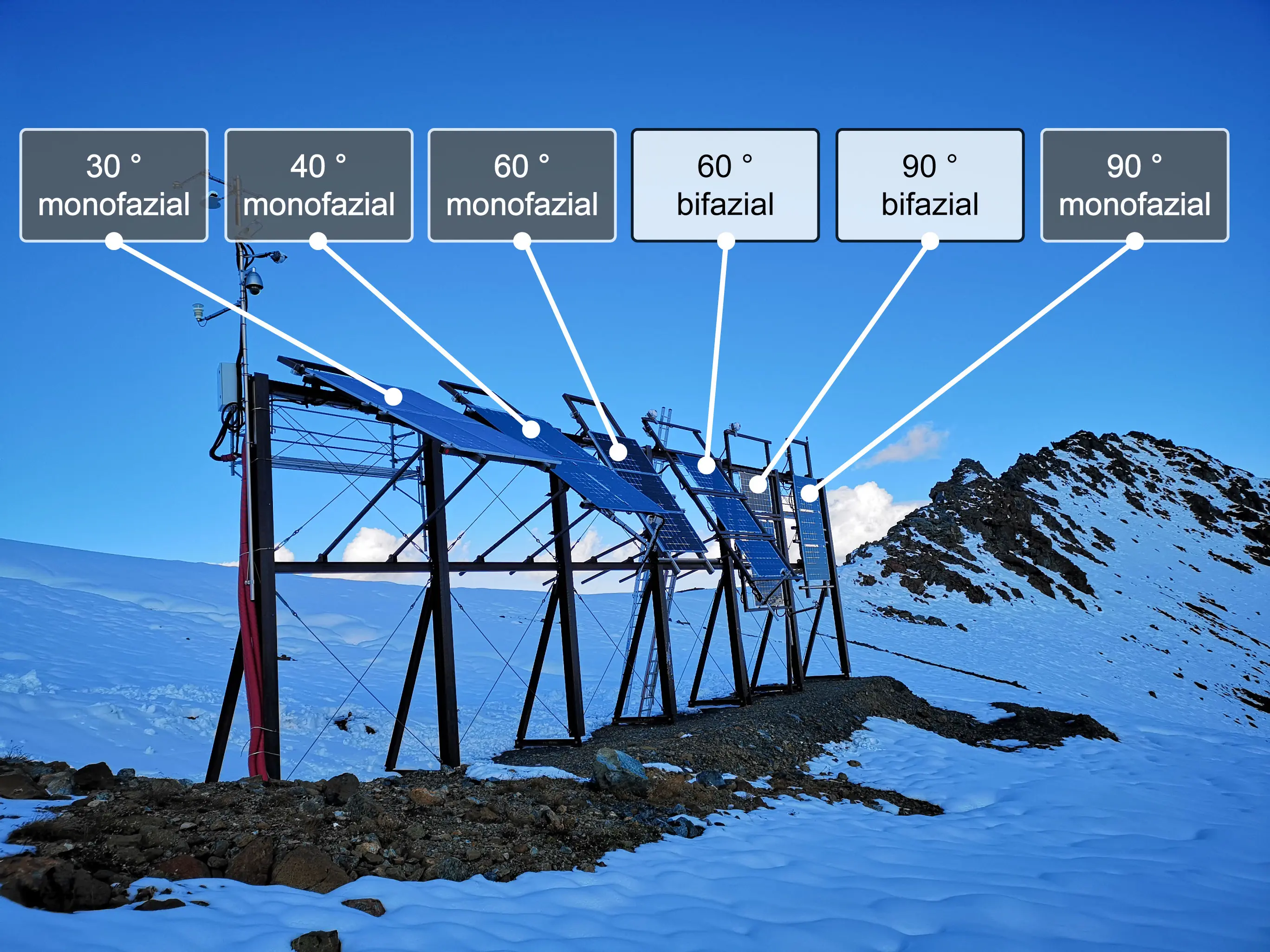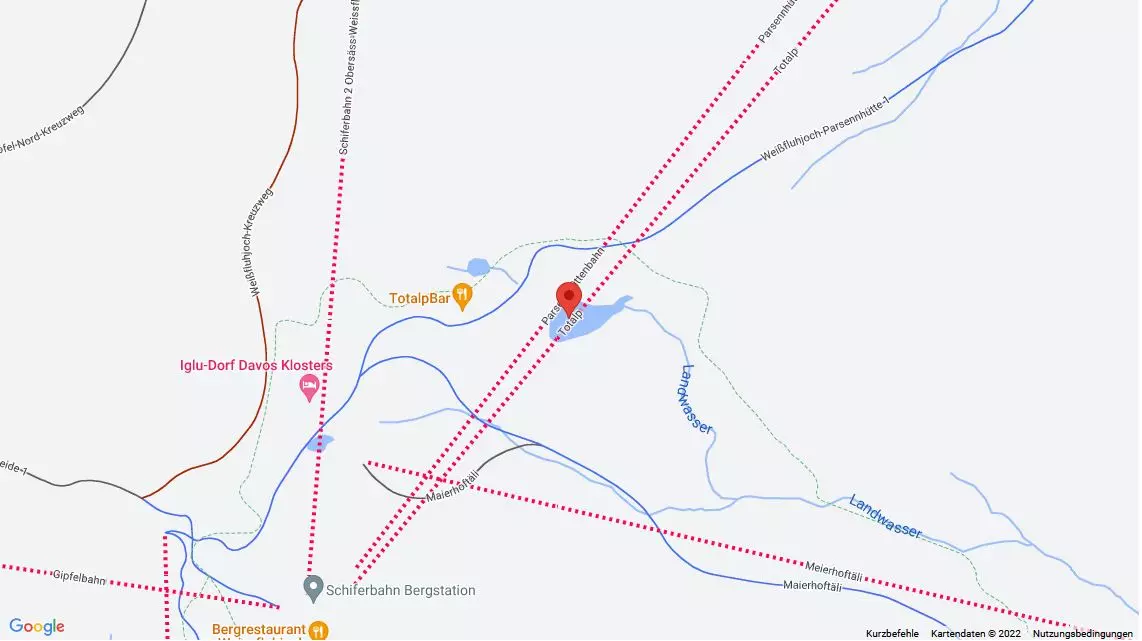Alpenstrom Davos
Using the experimental photovoltaic system, the influence of the Alpine region on electricity yields is being investigated. Thanks to reflection from the snow surface, the low air temperature and, compared to the lowlands, less fog, high yields can be achieved in winter, especially with bifacial photovoltaic modules.
Too little electricity in winter
According to the Energy Strategy 2050, photovoltaics should play an important role in energy supply. Switzerland already produces more electricity in summer than it consumes, while in winter it has to import electricity. This discrepancy between consumption and production will tend to increase in the coming years.
On the one hand, this is due to lower electricity production in winter (phase-out of nuclear energy), and on the other hand, due to higher electricity demand in winter (switch from fossil fuel heating to heat pump systems). The decarbonization of the energy system that will be necessary in the future exacerbates this problem and is being investigated by the Renewable Energies research group in another project (see decarbonization calculator).
The winter supply bottleneck is currently being reduced primarily by seasonal storage and electricity imports. Seasonal storage systems include, for example, pumped storage hydroelectricity plants. In the future, these could also include “Power to X” technologies, in which excess electricity is used to produce liquid or gaseous energy carriers.
One way of generating renewable winter electricity and thus reducing the seasonal storage requirement is to operate photovoltaic systems in mountainous areas. This allows high yields to be achieved not only in winter, but throughout the year. The high alpine winter electricity yield is mainly due to a few days of fog, high solar radiation, reflection of radiation from the snow-covered environment and low ambient temperatures. This project is investigating the extent of the individual effects on the winter electricity yield and what electricity yields can be achieved in winter.
With a model photovoltaic system at the same location, the Renewable Energies research group is also investigating the influence of various setting parameters such as slope inclination, module inclination or row spacing in order to be able to carry out yield estimates and optimizations for alpine solar installations.
In the NANO edition of February 19, 2024 of 3SAT, you will find drone footage of the photovoltaic test facility in Davos Totalp, which is also shown in the following video.
In several research projects, the ZHAW Wädenswil Research Group for Renewable Energies is investigating the generation of solar power in winter (project at Lake Walen). Since the end of 2017, an alpine photovoltaic test facility has been in operation at 2,500 meters above sea level at Totalpsee in the Parsenn area above Davos.
This system consists of six south-facing segments whose angle of inclination can be individually adjusted. A total of 20 photovoltaic modules (mono- and bifacial) with a total output of 5.6 kWp have been installed. In addition to the electrical parameters, a wide range of meteorological data (wind, precipitation, irradiation, temperature) are recorded. Continuously recorded webcam images allow weather conditions such as snow cover on the modules or the surrounding area to be tracked.
The data is generated in a high temporal resolution and continuously checked for plausibility. The measurement technology is housed in a shipping container and the electricity generated is fed into the Davos power grid. Among other things, the measurements are intended to answer the following questions:
- How much does the reflection of irradiation on the snow surface (albedo effect) favor the electricity production of solar modules, especially for bifacial modules that also make use of irradiation on the backside?
- How can the yield of a photovoltaic system in the Alps be reliably estimated (comparison of simulations with actual yields)?
- How long does the snow remain on modules with different angles of inclination and how can it be made to slide off?
- Are certain angles of inclination more suitable in the mountains than in the lowlands?
- How can the yields of bifacial modules be increased and reliably predicted using simulations?
- How do extreme climatic conditions affect the service life of components?
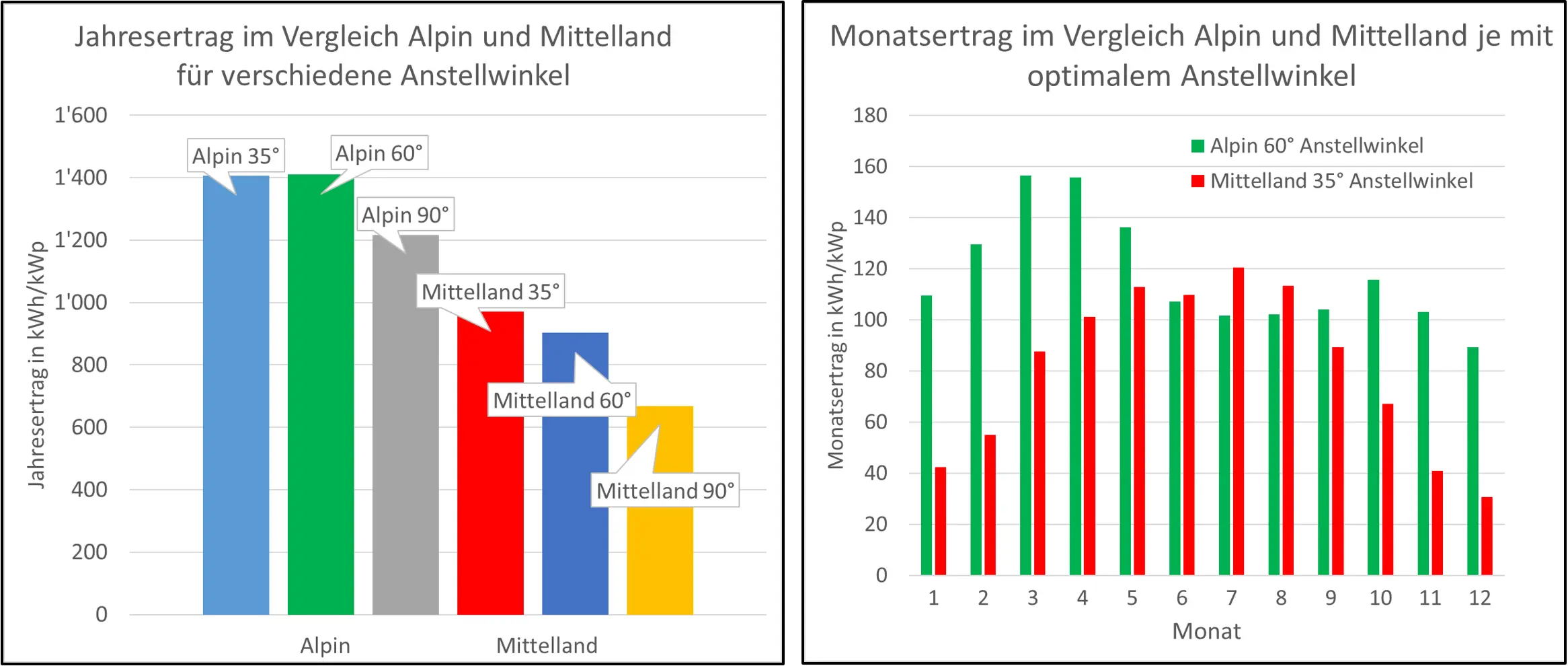
Yield simulations have shown that there is generally higher yield potential in alpine regions. This applies in particular to systems with a high angle of inclination (60°-90°), for which higher yields are forecast at the system location than for optimally aligned systems in Wädenswil.
The monthly trend in alpine yields is also predicted to be particularly favourable. Annual yield fluctuations are lower and energy production is higher in winter.
The measurement results to date show that the yield forecasts can be exceeded. In the years 2018 to 2024, all plant segments delivered higher yields than the simulations had predicted. By using bifacial modules in combination with steep tilt angles, mean annual yields between 1,690 and 1,837 kWh/kWp were achieved. Compared to an average photovoltaic system in Switzerland (just under 1,000 kWh/kWp), this corresponds to an increase of 70 to 85 percent.
All alpine plant segments have so far shown a very high yield in the winter half-year. With up to 817 kWh/kWp, a winter electricity yield 2.3 to 3.6 times higher was generated compared to a plant in Wädenswil. In the winter months from October to March, the bifacial modules in the mountains generated a similar yield to that in Wädenswil over the entire year.
The additional yield from bifacial modules compared to monofacial modules, measured over a full year, was between 25 and 28 % in each case and is highly dependent on the season and the angle of inclination of the modules.
Yield measurements at the alpine photovoltaic system in Davos Totalp show significantly higher yields in the winter months compared to a system on the Swiss Plateau with a 20-30° inclination. For example, during the winter months with the lowest yields in the midlands (November, December and January), the 90° inclined bifacial modules in Davos generated a similar amount of energy to the Wädenswil plant in the high-yield summer.
The yields of the alpine photovoltaic system in Davos are significantly higher than in the midlands, particularly when Switzerland usually imports electricity from abroad.
The normalized production profile, which is based on current measurement data, is available for the various segments with the respective inclination angle and the module technology used. The production profile can be displayed for all segments by selecting the segment in the legend. Segments that are not currently displayed are crossed out. The values are specific, i.e. standardized to kilowatts peak. This allows the yield and the measured power to be compared independently of the installed power.
Go to the live visualisations of the standardised production profiles
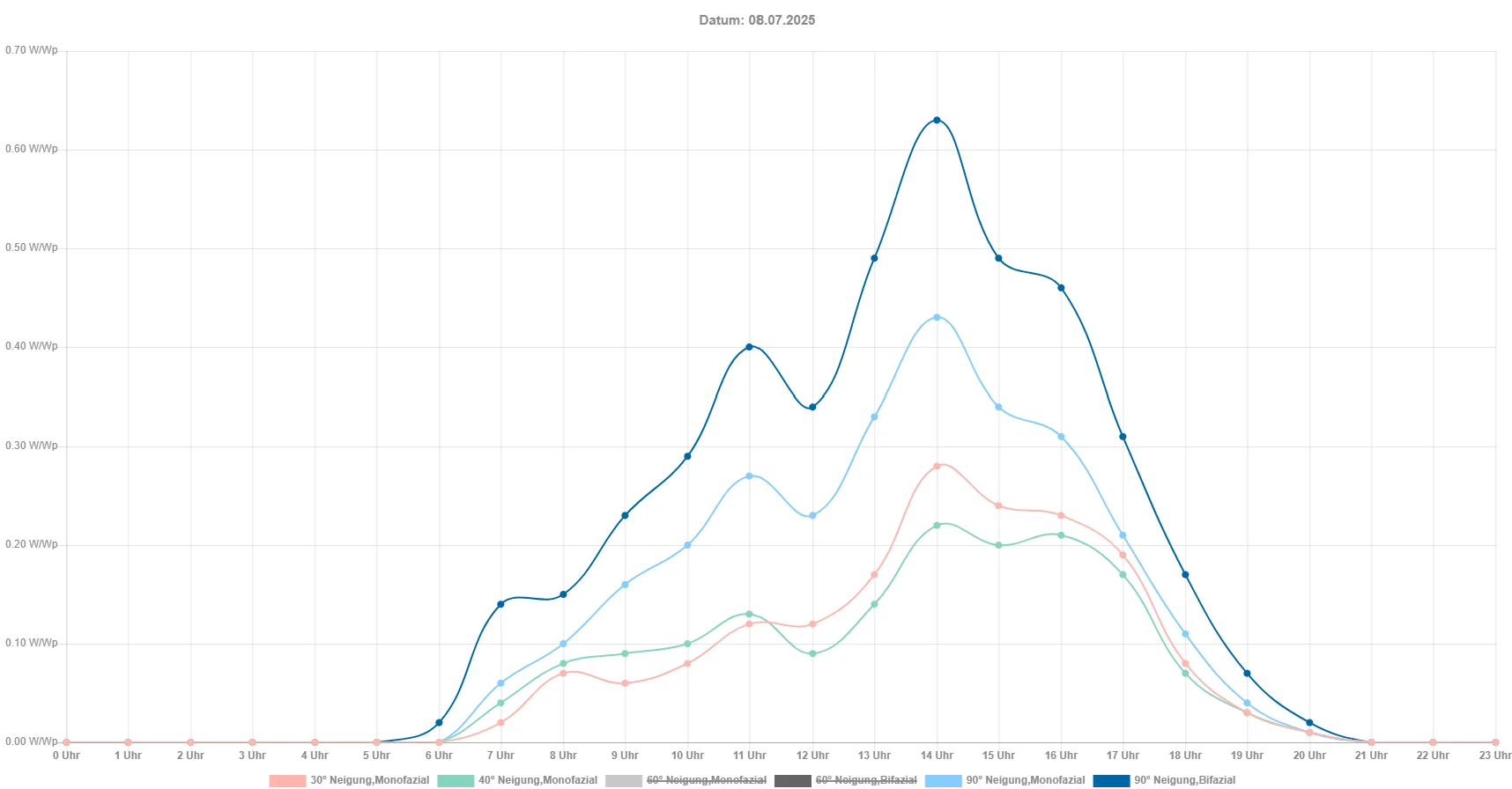
Sum of the specific yields of the investment segments
Based on current measurement data, the graphic that can be viewed here shows the total energy yield over 30 days. Depending on the season, the yields between the segments sometimes vary significantly. The additional yield from the use of bifacial modules is also particularly striking. This additional yield corresponds to the difference between the bifacial and monofacial system segments of the same inclination.
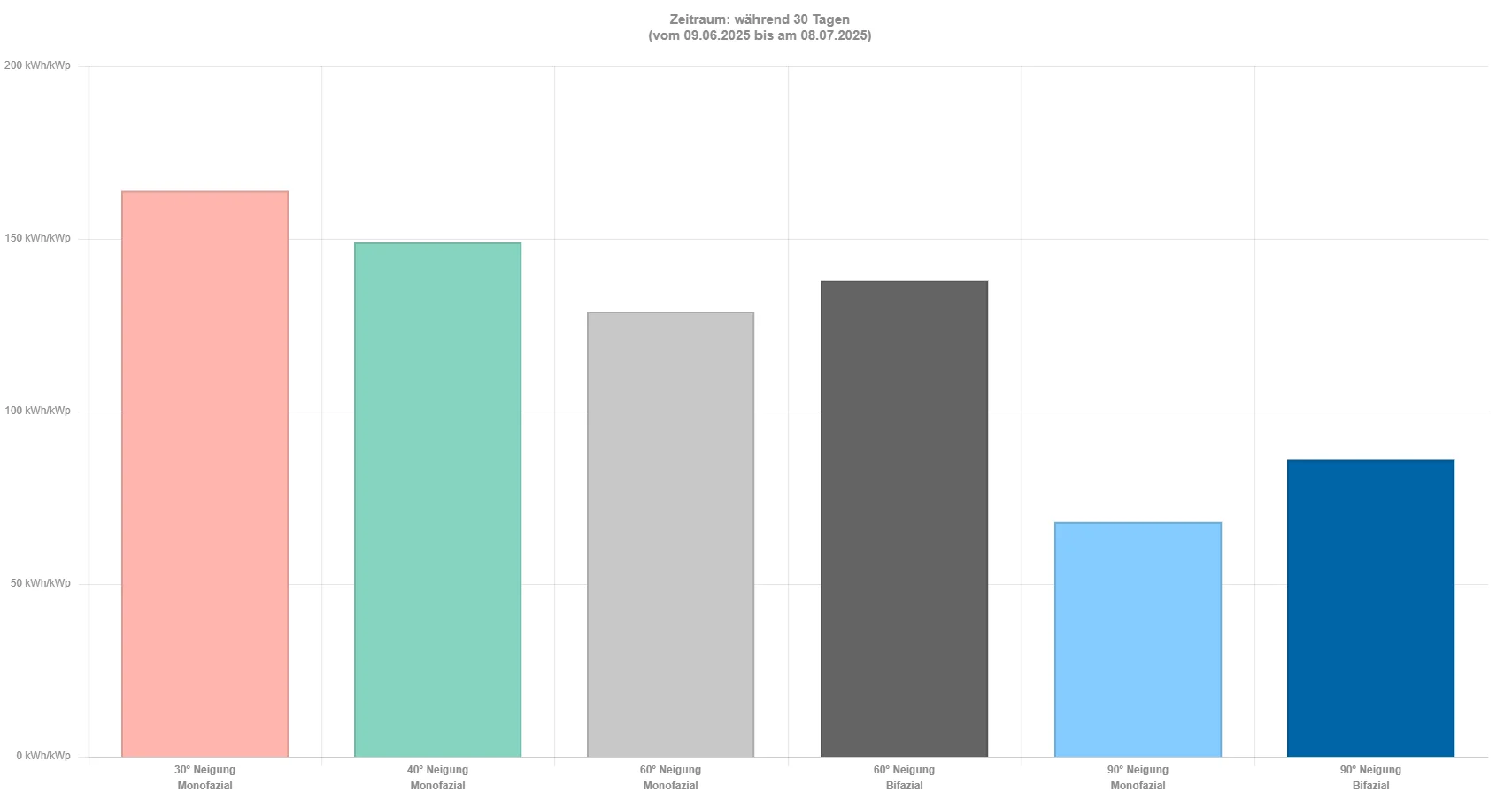
Current Webcam Image
Images are taken at five-minute intervals from different angles using webcams. With the help of these images, the snow coverage of modules or the surrounding area, for example, can be recognized and evaluated.
Alpenstrom Project Participants
The «Alpenstrom» project and the research facility are supported by the Institute for Snow and Avalanche Research (SLF), the electricity works of the Canton of Zurich (EKZ), Zenna AG and the Swiss Federal Institute of Technology in Lausanne.
Measurement Reports
- Findings from 5 years of operation (PDF 4.38 MB)
- Measurement report April 2023 to March 2024 (PDF 3.81 MB)
- Measurement report April 2022 to March 2023 (PDF 2.75 MB)
- Measurement report winter half-year 2021/2022 (PDF 2.35 MB)
- Measurement results summer half-year 2021 (PDF 2.82 MB)
- Measurement results winter half-year 2020/2021 (PDF 3.38 MB)
- Measurement results summer half-year 2020 (PDF 3.28 MB)
- Measurement results winter half-year 2019/2020 (PDF 12.69 MB)
- Measurement results summer half-year 2019 (PDF 2.06 MB)
- Measurement results June 2018 to May 2019 (PDF 4.12 MB)
Further Information
- «Solar Power from the Swiss Alps» Interview with Jürg Rohrer and drone footage of the alpine test facility in the NANO report by 3SAT
- «Wallis does not want a solar express» Interview with Jürg Rohrer about alpine solar facilities on SRF
- Information about the project «Alpine Model Photovoltaic Facility» by the Renewable Energy Research Group for estimating yields and optimizing alpine solar installations
- Interview with Jürg Rohrer on Alpine solar installations on SRF
- Interview with Jürg Rohrer on Alpine solar installations on Regionaljournal DRS
- «Photovoltaics in the Alps: a central building block for the energy transition» - Report in the online magazine Syntopia Alpina on the potential of solar power in the Alps
- «Does photovoltaics make sense in the Alps?» - Jürg Rohrer's report in the SEV/VSE Bulletin on the potential of solar power in the Alps (PDF 3.02 MB)
- «Solar investors are heading for the mountains» - Report on Alpine open-space solar systems in the Aargauer Zeitung (PDF 258 kB)
- «Alpine solar systems – does this make sense?» - Jürg Rohrer's presentation at the 2nd Energy Transition Congress in Oberburg/BE (PDF 3.01 MB)
- «Alpine solar systems provide three times as much winter electricity» (swisspower.ch)
- Ground-mounted photovoltaic systems in alpine winter sports resorts
- Pilot plant: photovoltaics in the Alps is becoming inevitable (PDF 249 kB)
- Die Alpen 2021/02: Those who do not use energy efficiently must be prepared to sacrifice landscape. This also includes photovoltaic systems in the mountains (PDF 1.40 MB)
- Walliser Bote: Alpine solar systems produce a lot of winter electricity, which could satisfy the increasing demand for electricity for heat pumps (PDF 1.36 MB)
- Interview in the «Walliser Bote» on winter electricity from photovoltaics in the Alps (PDF 3.80 MB)
- Report in the IUNR magazine: Winter - the sunny side for alpine solar power production (PDF 1.26 MB)
- Winter electricity with alpine photovoltaics: Poster 18th National Photovoltaic Conference (PDF 0.94 MB)
- Public lecture by Jürg Rohrer on the topic of winter electricity at the OLMA trade fair on October 16, 2019 (PDF 1.25 MB)
- Photovoltaics in the high mountains: Making better use of the winter sun (baublatt.ch)
- Winter electricity from PV in the Alps: Results Davos-Totalp after one year of operation: Poster 17th National Photovoltaic Conference (PDF 458 kB)
- Photovoltaics in the Alps: Poster 13th National Photovoltaic Conference (PDF 4.72 MB)
- Does photovoltaics make sense in open terrain?: Poster 12th National Photovoltaic Conference (PDF 4.72 MB)
